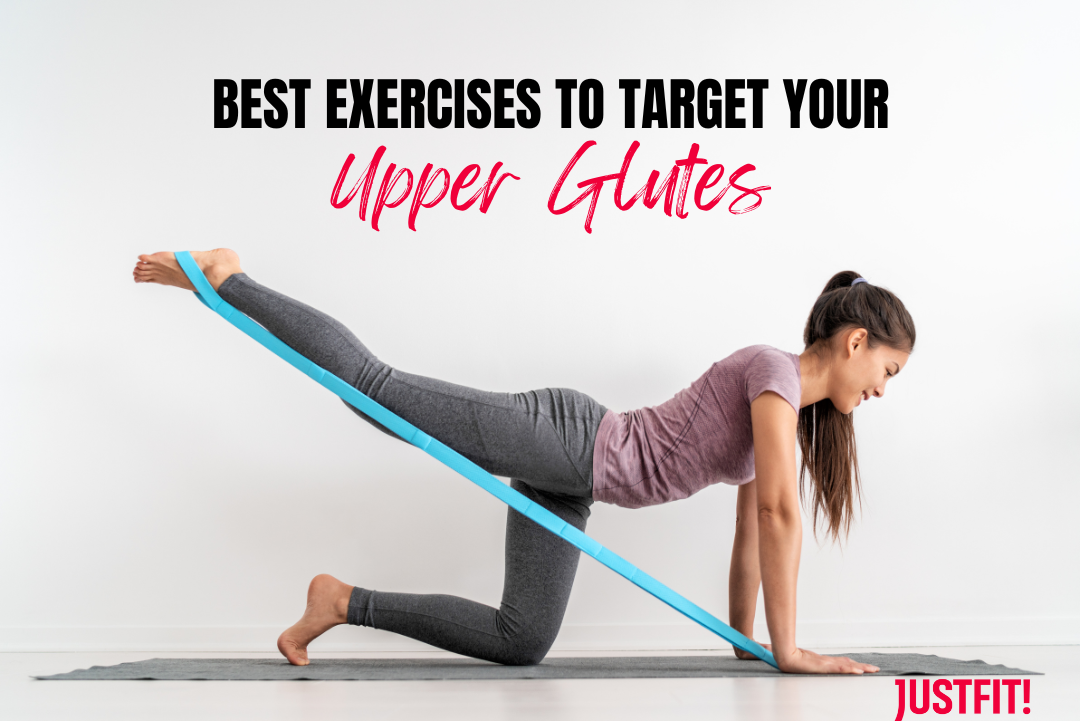If you’re looking for an upper glute workout to grow that bum, you’ve come to the right place.
Strengthening the glute muscles will not only help to give you that sculpted appearance that you are looking for, but it also aids in building that overall lower body strength and stability.
This article will cover topics like the upper glute anatomy, how to target them, benefits of having strong upper glutes and some effective butt workouts to try. A simple workout routine will also be shared for you to try at home or the gym!
What is the muscle at the top of your buttocks?
The muscle located at the top of your buttocks is called the gluteus medius. It is also commonly known as the upper glute or the glute shelf. This muscle is what helps keep your pelvis level as you walk.
How does the glutes work?
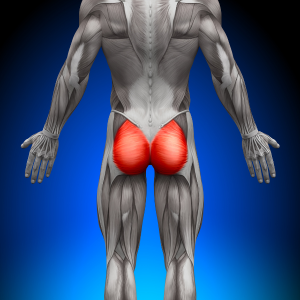
The buttock region is formed by a group of muscles called the gluteal muscles. This group of muscles consists of the gluteus maximus, gluteus medius and gluteus minimus. The gluteal muscles are considered anatomically important because they are vital for vigorous movements and stability [1].
It is responsible for extension, internal rotation and abduction of the hips. From walking to sitting down and even the simple act of moving your hips. The glutes are working to support and facilitate these everyday movements.
The benefits of having strong glutes
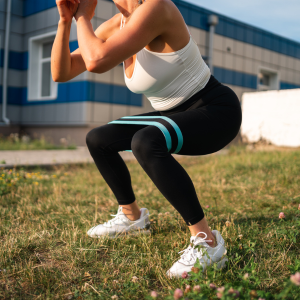
Besides the aesthetics that both women and men alike strive to obtain, there are surprisingly many benefits of having a set of strong glutes such as:
Better stability and balance
Training your glutes and making them strong will also contribute to having better stability and balance. This is important if you are engaging in activities that would need lateral stability.
Try practise standing on one leg and see if you are able to stabilise yourself and not fall. If you find yourself feeling extremely wobbly and unstable, you might just want to try doing some glute workouts and strengthening those muscles.
Strong glutes prevents injuries
Achieving strong glutes and hip muscles plays a pivotal role in injury prevention. The glutes contributes significantly towards stability and proper alignment of the spine, supporting the entire body.
An example would be providing stability for the hip joint. A stable hip joint will ensure that even with weight-bearing movements or activities, it will still be done in a smooth and controlled way.
Improves posture
The glutes are pelvic stabilising muscles that work to maintain proper posture. Having well-developed glutes reduces the strain on the spine, decreasing the risk of postural-related injuries.
Enhances athletic performance and increases power output
‘Ready, Set, Go!’
Before starting a run, there’s always an initial movement required to push yourself off the ground and start transitioning into a sprint. This forward propulsion is assisted by the glutes by creating an explosive hip extension.
That’s not all. The glutes are also essential to movements like running, jumping, acceleration and heavy lifting movements (e.g. squats, deadlift, hip thrusts, etc.)
If your glutes are weak, you may find yourself struggling with these movements and not being able to do them in an efficient manner.
Exercises That Target the Upper Glute
Are you ready to start sculpting that upper glutes for a strong and round bum? Here are some of the best glute exercises that you can incorporate into your next lower body-workout routine.
Note that some of these exercises may require you to use dumbbells, barbell or a weighted plate.
1. Lateral Lunge (Squats)
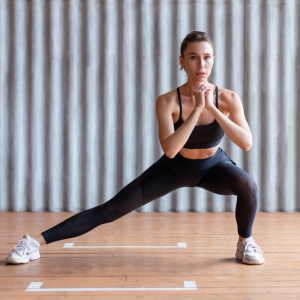
How to do it:
- Start by standing with you feet shoulder-width apart and your knees bent slightly. Keep your head and neck in neutral position.
- Place your hands on your hips. This is your starting position.
- Take a big step to the left or right side and shift your body weight over to the leading leg.
- In this position, bend your hips and knees and sit your hips back. Your knees should not go over your toes and your feet should be pointing forward.
- Once you have sit back in this position, pause and hold this position for a few moments.
- Use your glutes and quads to push yourself back up to an upright position. As you return to starting position, both your legs should be next to each other.
- Repeat on both sides until you have finished your sets.
It is recommended to start with 2-3 sets of 10-15 repetitions on each side. Depending on your fitness level and goals, you can also modify the exercises by increasing or decreasing the number of sets and repetitions.
2. Hip Thrust
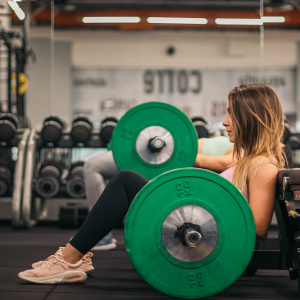
How to do it:
- Start by laying on the floor and placing your upper back against a flat gym bench.
- Bend your knees and ensure to keep your feet flat on the floor.
- Take a deep breath, squeezing your core muscles to engage your abs.
- Squeeze your glutes, pushing through your heels to lift your hips off the floor.
- Ensure that your hips align with your knees and shoulders as you push.
- Pause for a moment at the top and inhale.
- Slowly lower your butt to the floor as you exhale.
- Inhale once again as you push your hips off the floor.
- Repeat this until you are done with the sets.
If you don’t find this challenging enough, try incorporating heavier weights or exploring other variations of the exercise. Equipment like resistance bands or barbells can elevate the difficulty level, providing a more intense workout.
3. Single-Leg Glute Bridges
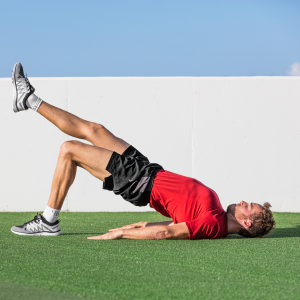
How to do it:
- Start by placing a yoga mat on the floor and lay down with your back flat against it.
- Bend both your knees and ensure that your feet is plant firmly on the floor.
- Ensure that your shoulders are back and your hands are placed on either side of your body. Your palms should be placed face down and flat against the floor, for balance.
- Brace your abs as you inhale and extend one of your legs straight up in the air.
- Squeeze your glutes as you push your hips up. You should feel the weight on the heel of the leg that is bent. Pause for a moment at the top.
- Exhale and lower your hips back down to the floor.
- Inhale as you repeat this movement.
- Repeat for 2-3 sets for 10-15 reps and switch sides or adjust accordingly.
If this is too difficult, you may modify the exercise by doing normal glute bridges with both feet on the floor instead.
4. Bulgarian Split Squats
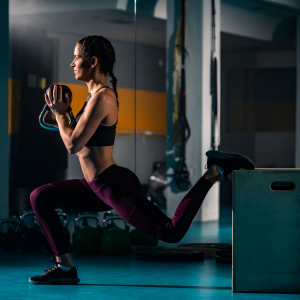
How to do it:
- You will require using an elevated surface such as a plyometric box or a flat gym bench.
- Start by facing away from the surface, slowly extend one leg back and place the foot against the surface.
- Lean forward slightly with your torso upright. Place your hand on your hips for added support.
- Bend your front knee as you push your hips backs. Imagine that you are hinging at the hips.
- Press through the front heel and push back up to the top.
- Exhale each time you are at the top, inhale as you go back down into the position.
- Repeat this for 2-3 sets for 10-12 reps and switch sides or adjust accordingly.
Once you are more confident with the motions of this exercise, you may include the use of dumbbells to increase the impact of the exercise.
5. Single-Leg Deadlifts
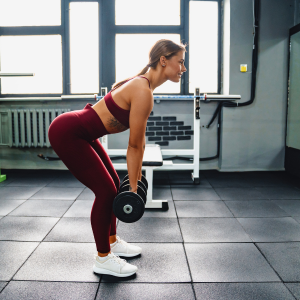
How to do it:
- Start by standing with your feet shoulder-width apart and a slight bent in your knees. Ensure that you are keeping your head and neck in neutral position.
- Choose your working leg to start with and move the non-working leg slightly behind the foot of your working leg.
- If you are using a dumbbell or kettlebell, make sure that it is in line with the opposite leg. Then, slowly hinge forward at the hips until you feel a stretch at your hamstrings of your working leg. Keep the weights close to your leg as you hinge forward.
- Once you feel the stretch, thrust your hips back to neutral position in a more explosive manner and come back up to the starting position. Each time that you come back up, you want to squeeze the glute muscles and release.
- Repeat this for 2-3 sets for 10-15 reps and switch sides or adjust accordingly.
Upper Glutes Workout Routine
Aside from those 5 exercises, there are many other effective exercises that work to specifically target the upper glutes. Including a variety of movements can aid in a more comprehensive glute development and strength. Here is an example of a simple upper glute workout routine that you may try:
- Clamshells– 2 to 3 sets of 12 to 20 reps on each side. Rest for 1 to 1.5 minutes in between each sets.
- Sumo deadlift– 2 to 3 sets of 10 to 15 reps. Rest for 1 to 1.5 minutes in between each sets.
- Hip thrusts– 2 to 3 sets of 8 to 12 reps. Rest for 2 to 3 minutes in between each sets.
- Bulgarian split squats– 2 to 3 sets of 10-12 reps. Rest for 1.5 to 2 minutes in between each sets.
- Banded lateral walks– 2 to 3 sets of 10-15 reps per direction. Rest for 1.5 to 2 minutes in between each sets.
Feel free to use this workout routine or switch it up with other exercises that work best for you. For additional glute exercises and workout routines, explore some of the free resources available at JustFit. It offers everything from short workout routines to comprehensive workout programs.
You may like this: Glute Building Workout Plan PDF
FAQs about Upper Glute Exercises
Why are my upper glutes not growing?
There are a few potential reasons why your upper glutes (also known as the gluteus medius) may not be growing as much as you would like:
- Insufficient stimulus: If you are not performing exercises specifically targeting the upper glutes, they may not be receiving enough stimulus to grow. Try incorporating exercises such as lateral lunges, side-lying leg lifts, and glute bridges with a band around your knees into your workout routine.
- Improper form: If you are performing exercises for your upper glutes but using improper form, you may not be effectively targeting the muscle. Make sure to use proper form and technique when performing exercises to ensure that you are effectively targeting the muscle.
- Inadequate nutrition: Proper nutrition is important for muscle growth. If you are not consuming enough protein and calories, your body may not have the necessary building blocks to repair and grow muscle tissue. Make sure you are fuelling your body with adequate nutrients, including protein, to support muscle growth [2].
How long does it take to grow the upper glutes?
Typically, it takes 6-8 weeks. It’s not possible to give a specific timeline for how long it will take to grow your upper glutes, as it varies across individuals. It’s important to be patient and consistent with your training and nutrition, and to set realistic goals for yourself.
How do you train all 3 glutes?
The three muscles that make up the glutes are the gluteus maximus, gluteus medius, and gluteus minimus. To target all three muscles, you want to focus on alternating or mixing exercises that target each muscle. Some exercises that you may choose to incorporate are:
- Squats: Squats are a great exercise for activating all three glute muscles. You can perform bodyweight squats, goblet squats, or barbell squats to challenge yourself.
- Lunges: Lunges are another effective exercise for activating the glutes. You can perform forward lunges, reverse lunges, or lateral lunges to target different parts of the muscle.
- Glute bridges: Glute bridges are a simple but effective exercise for activating all three glute muscles. You can perform them with just your bodyweight or add resistance using a barbell, dumbbells, or a resistance band.
- Step-ups: Step-ups are a great exercise for targeting the gluteus maximus and gluteus medius. You can use a step or bench for this exercise, and hold dumbbells or a barbell for added resistance.
- Side-lying leg lifts: Side-lying leg lifts are a good exercise for activating the gluteus medius and minimus. You can perform this exercise with or without added resistance, such as a resistance band or small dumbbell.
How to get a shelf on the upper glutes?
The best way to target the lower back and upper glutes, improving your shelf butt, is to perform the glute exercises that are specifically targeting the upper glutes. You can pick from the list of exercises put together or follow the upper glute workout routine above. Consistent training will help you to grow that shelf!
Should I train my glutes every day?
Daily training might seem the best way to make optimal progress, but that isn’t the case. The glutes are like most other skeletal muscles. You need to give your muscles time to recover. Focus on consistency and avoid over-exerting your muscles.
References
[1] Elzanie A, Borger J. (2023) Anatomy, Bony Pelvis and Lower Limb, Gluteus Maximus Muscle [online]. Treasure Island (FL): StatPearls Publishing. Available from: https://www.ncbi.nlm.nih.gov/books/NBK538193/ [Accessed 6 Mar 2024].
[2] Robor Fitness (2024) WHY ARE MY GLUTES NOT GROWING [online] Available at: https://www.roborfitness.com/blogs/news/why-are-my-glutes-not-growing [Accessed 6 Mar 2024].

